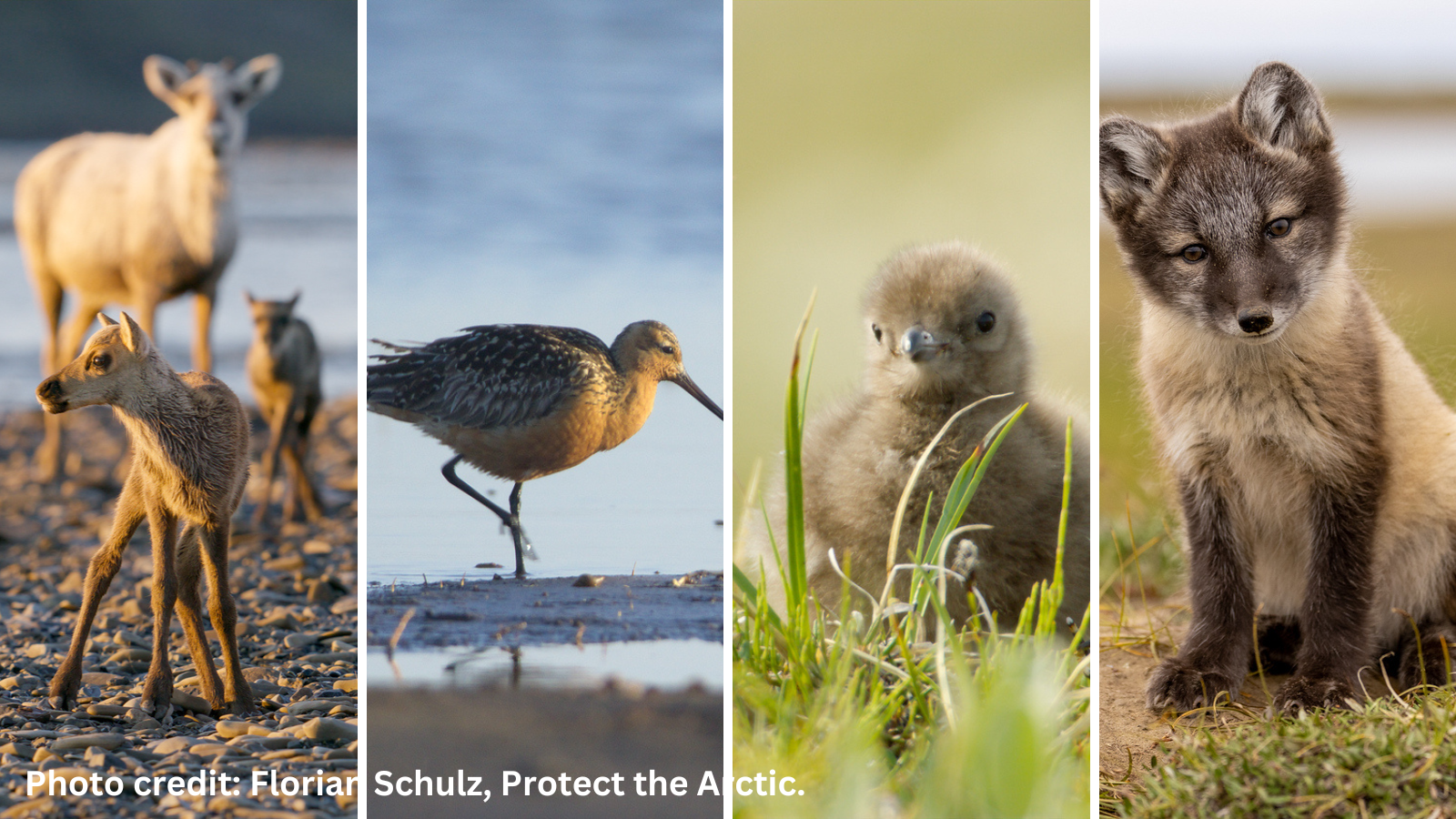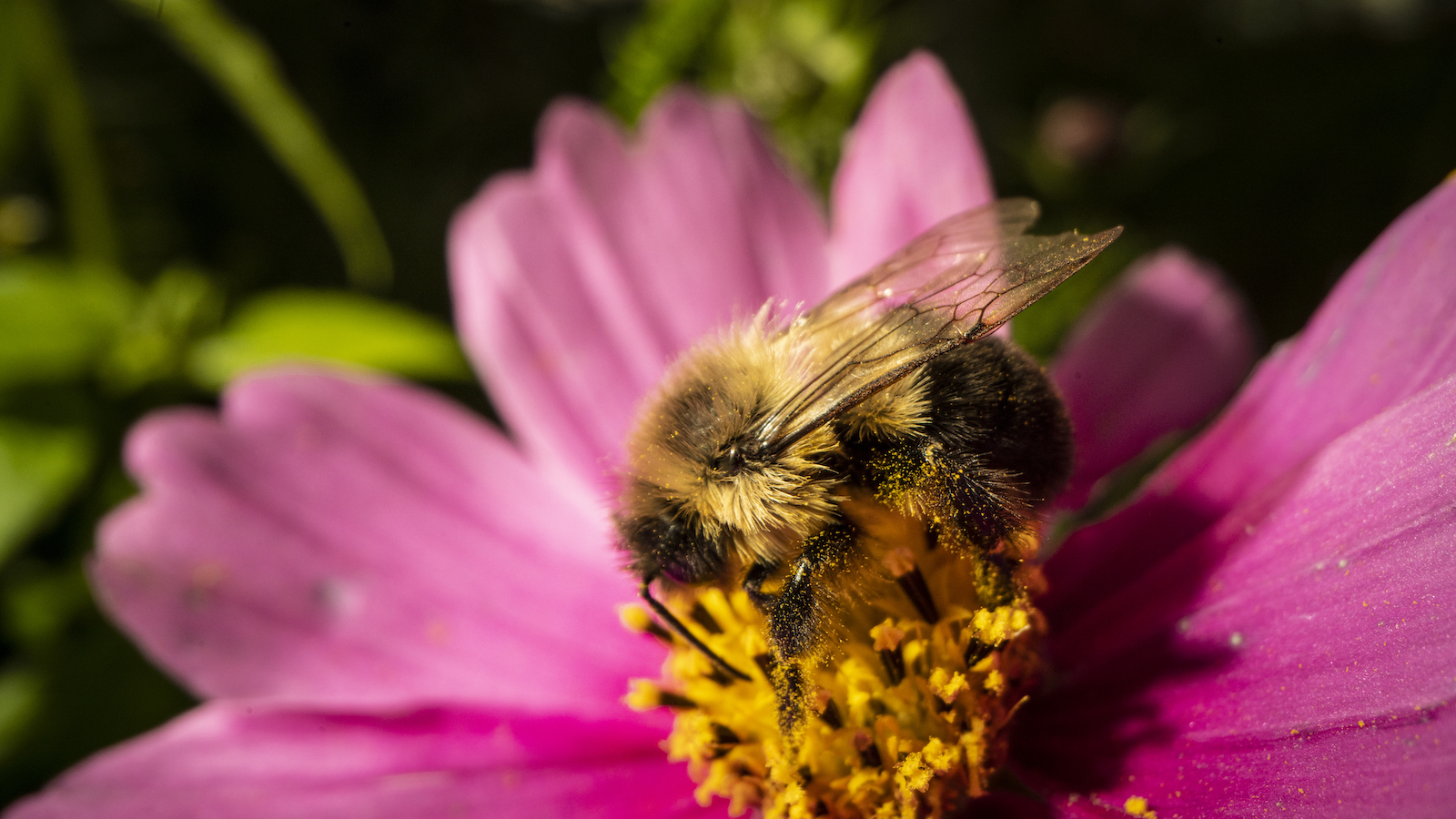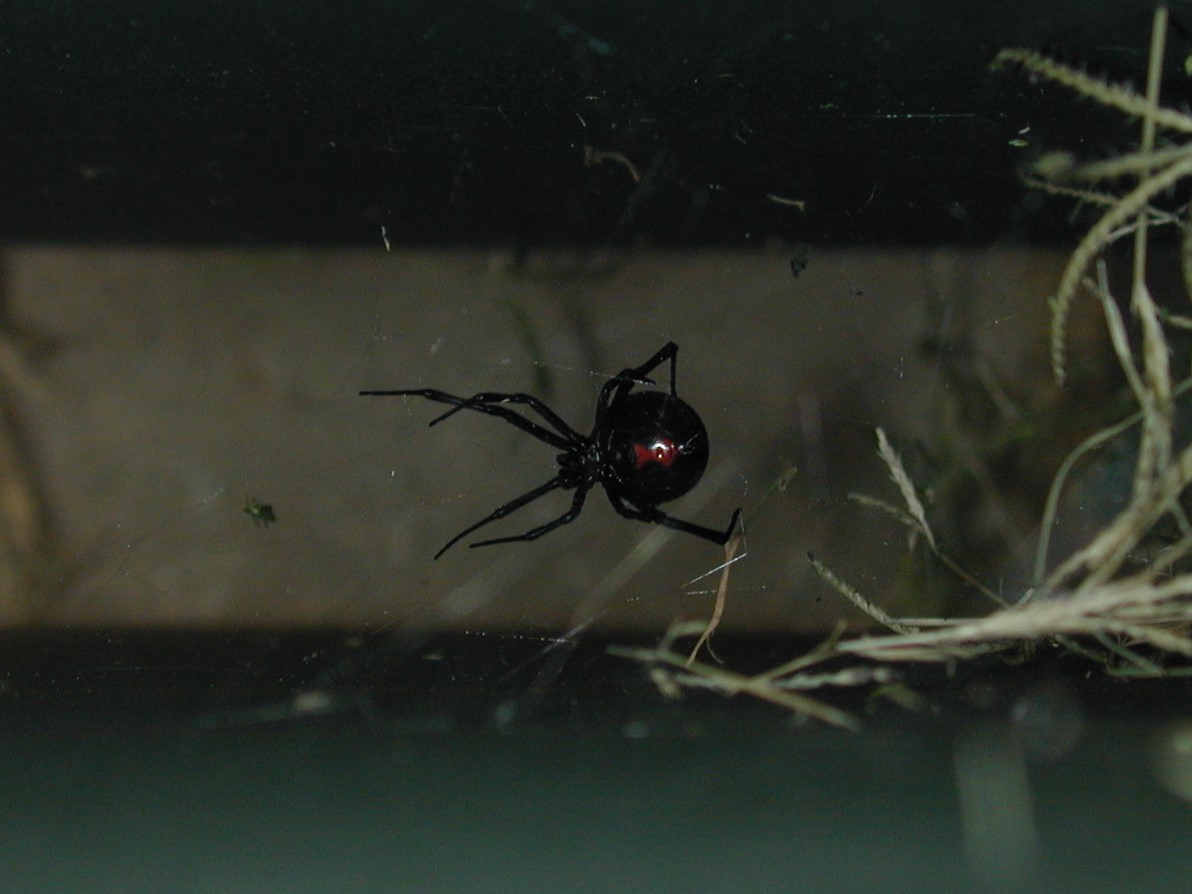
Sympathy for the Devil
Even those creatures that strike fear into the hearts of us humans are crucial components of complex ecosystems. Preserve those ecosystems and they fulfill important functions – including ones that benefit us.
About a year ago, returning home late one night, I noticed something under my front doorstep that I was pretty sure hadn’t been there when I left the house. Even before I’d knelt down to investigate, a spontaneous full-body shiver gave me a heads-up that whatever it was, it definitely wasn’t good.
I’m an arachnophobe. Like, a serious arachnophobe. And here, inches from the entrance to my home, was the largest, meanest, most evil-looking spider I’d ever seen. When I saw the brilliant red hourglass shape on its abdomen, I momentarily left my body and entered some sort of dissociative state.
First thing the next morning I turned over every inch of the house and yard, and to my horror, found the distinctive, messy webs of the black widow all over the property (none in the house itself though, fortunately). In many of those webs, little white sacs of silk indicated that the situation was about to get a whole lot worse.
Where I come from, we don’t have black widows, but like everyone else on the planet we know them well enough by reputation. Suddenly having a garden full of these deadly creatures was the stuff of nightmares, and I had absolutely no idea how I was supposed to deal with it.
My dog was immediately confined to the house, much to his confusion, and I set about scouring the internet to find out what my next steps should be, short of unleashing a chemical holocaust on my yard, which for a whole range of reasons – environmental and ethical – I was not prepared to do.
I learned a lot during that research – much of it about California’s laws regarding arson (frowned upon apparently, even if the property in question is your own). But over the following months I also became something of an expert on spiders, and the Latrodectus hesperus in particular.
I learned about their behaviors and habits, their hunting tactics, their life cycles and courtship routines, their personality and demeanor, their architectural and web development skills, and every possible natural and humane way of repelling them – some of which, rather to my surprise, were actually somewhat effective. (Pro tip: black widows have an excellent sense of smell, and they really don’t like peppermint, citrus, eucalyptus or tea tree oil, or pungent plants like lavender and mint.)
Weirdly, the more I learned about these creatures, the more I came to, if not warm to them exactly, then at least develop a degree of sympathy for them.
Contrary to their public image, these most feared and storied arachnids are actually shy, timid, introverted animals. Their appearance may be horrifying and their venom some of the deadliest in the entire animal kingdom (though only very rarely lethal to humans), but they have no interest in picking a fight. They’re not aggressive toward humans unless threatened (and even then, their preference is to flee rather than attack – it takes a lot to antagonize a black widow to the point where it will even attempt to bite). They enjoy their solitude, and rarely leave their web. All they want is to be left alone to live their lives. To be honest, they and I have a lot in common.
The more I read about these creatures, the more pictures I forced myself to look at, and the more time I spent watching the real-life ones in my yard, the less they made me physically shudder. Don’t get me wrong – I still don’t like them. I’d much rather not have them in my life. And if I ever find one in the house I’m torching the place and moving back to England. But the more time I spent with them, the more I came to realize that the black widow that haunts the collective imagination is only loosely related to the black widows that haunt my garden.
* * *
Indeed, one year on from that first encounter on my doorstep, the widows that have survived my essential-oils-based counterinsurgency and finely orchestrated program of forced relocation – well, we’ve kind of learned to coexist. At least for now.
Part of the reason for this has to do with the other species that’s been the bane of our lives since we moved into this place: the cockroach.
For months, nothing we did could rid us of these horrible alien invaders – and believe me, we did everything. Yet still they came.
Until, one day, they didn’t.
The roaches’ presence throughout our first winter here suggested that their departure wasn’t simply a seasonal thing, and eventually we began to wonder whether it might have something to do with our arachnoid squatters. Could it be that the remaining webs, mostly around cracks and crevices in the perimeter wall – and in particular, the three new webs we’d recently noticed uncomfortably close to the house – were forming some kind of natural defense system?
I don’t know for sure, but it’s a definite maybe. Say what you like about black widows, but they’re experts in pest control. Their diet consists of a whole variety of different insects – including cockroaches – and it seemed unlikely that the fact that at least a couple of the webs had appeared in places where I know the roaches used to hang out was just a coincidence. So back to Google I went…
Long story short, consensus seems to be that spiders won’t rid your home of an existing cockroach infestation, but by taking out any visiting roaches before they get the chance to lay eggs, they’ll stop one from starting – which might explain why despite seeing one or two roaches in the house pretty much every night for almost a year, it never developed into anything more than that.
It also seems plausible that the widows weren’t acting alone, but rather that the unusually copious species of spider that live inside the house were also doing their bit – jumping spiders and wolf spiders are partial to the odd cockroach, for example, as is the common house spider, and a range of others. And having more or less made peace with what I’d long considered to be literally the worst arachnid in existence, I now have no problem whatsoever with these harmless little cousins of theirs living in the house – particularly since they seem to be doing such sterling work.
* * *
To be clear, I’m not suggesting you should fill your property with spiders as a means of pest control – and certainly not black widows. Exaggerated though their reputation may arguably be, these are still extremely dangerous creatures, and having them anywhere near your living space is no joke – particularly if you have children or pets.
My point, rather, is twofold.
First, in 39 years on this planet, not once had I seen a black widow before last year, and yet still the very idea of them made my blood run cold. To some extent, I think, this is a question of conditioning. There’s a certain mythology around this particular spider, and like most mythology, it is founded only partly in reality. The more I learned about these creatures, the more time I spent up close and personal with the ones living in my yard, studying their habits and watching them go about their lives, the more my perception of them shifted. In short, it demystified them.
Too often, we have been conditioned to approach nature believing it to be this dangerous, terrifying entity that’s out to get us: something that must be tamed, banished, and in certain circumstances destroyed. And there are certain species that have an especially fearsome reputation. But if we approach these creatures from a place of understanding, rather than from a place of fear, then we begin to look at the natural world in a different, more sympathetic way, and this is perhaps the first step toward recognizing the need to protect it. Even the parts of it that make our skin crawl.
And second, even those creatures that strike fear into the hearts of us humans are crucial components of complex ecosystems. Disrupt those ecosystems – predator-prey dynamics in particular – and the effects reverberate throughout the entire system. Preserve them, and they fulfill important functions – including ones that benefit us.
So, the natural predator of the black widow? The wren, apparently. Also the mud-dauber wasp.
I’m looking into getting some wrens.
Topics
Authors
James Horrox
Policy Analyst, Frontier Group
James Horrox is a policy analyst at Frontier Group, based in Los Angeles. He holds a BA and PhD in politics and has taught at Manchester University, the University of Salford and the Open University in his native UK. He has worked as a freelance academic editor for more than a decade, and before joining Frontier Group in 2019 he spent two years as a prospect researcher in the Public Interest Network's LA office. His writing has been published in various media outlets, books, journals and reference works.
Find Out More

Why Alaska’s NPR-A, site of the Willow Project, deserves protection

Protect the Grand Canyon

A look back at what our unique network accomplished in 2023


